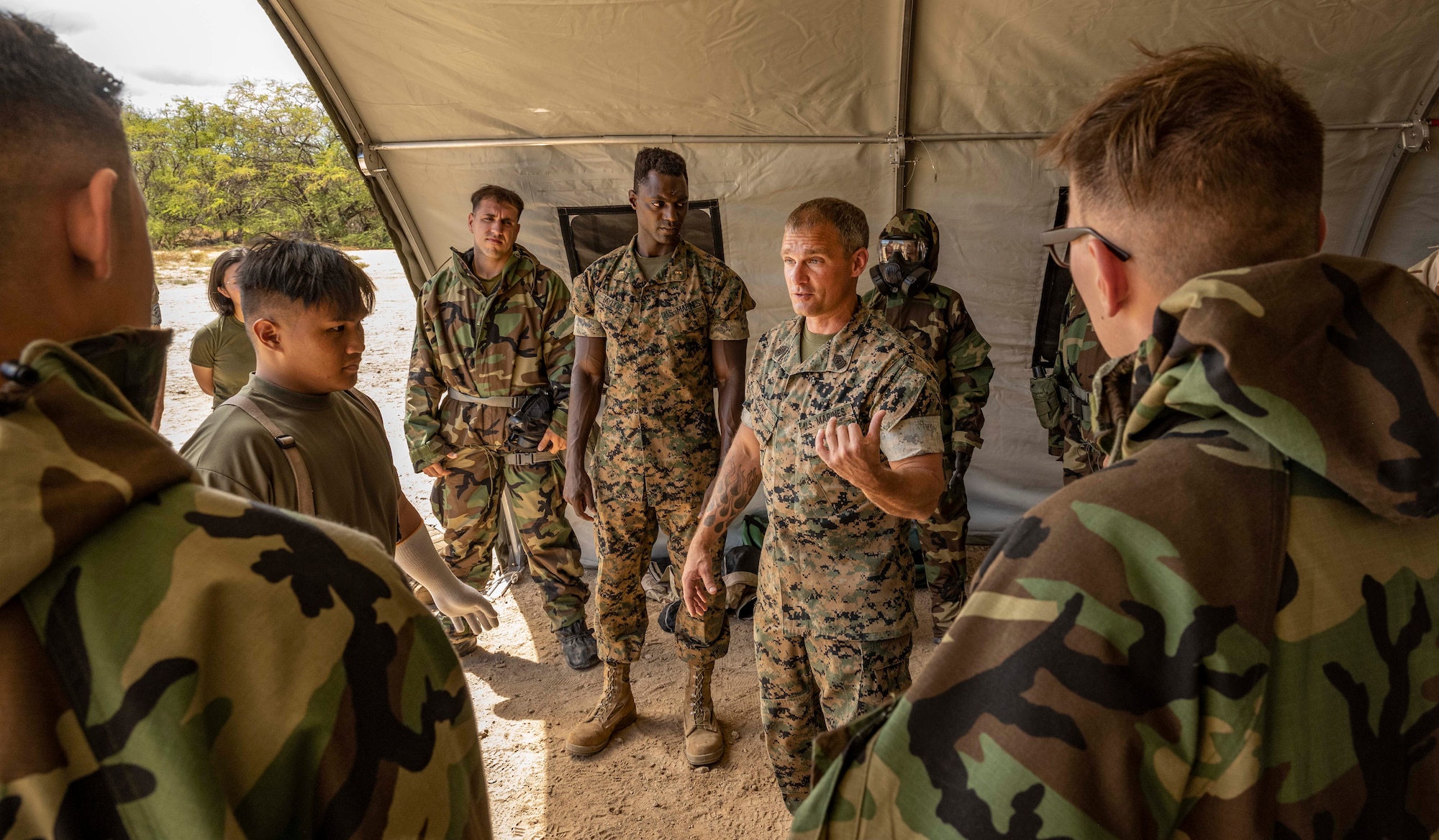
HICKAM AIR FORCE BASE, Hawaii — The Joint Program Executive Office for Chemical, Biological, Radiological and Nuclear Defense recently collaborated alongside the Air Force Life Cycle Management Center Air Force CBRN Defense Systems Branch and the 15th Wing to deliver a standalone large shelter during exercise Toxic Pineapple II at Hickam Air Force Base, Aug. 29 to Sept. 1.
The SAL system is a portable Integrated Collective Protective System (against CBRN attacks that military units throughout the U.S. Department of Defense can transport across the globe. The Toxic Pineapple exercise enabled servicemembers to gain firsthand experience on how to utilize the SAL for the very first time during a CBRN aircrew decontamination process.“The need for a Toxic Free Area in any CBRN Environment is critical for all operations,” explained U.S. Air Force Lt. Col. Paul Hendrickson, CBRN Defense Systems Materiel Leader. “For this exercise the ability to develop, refine and exercise concepts of operations and tactics, techniques and procedures for aircrew with a collective protection system is a huge win in regard to expected future conflicts against a near-peer adversary.”
Aircrew flight equipment experts from major commands throughout the Air Force to include Air Force Materiel Command, United States Air Forces in Europe, Pacific Air Forces, Air Force Global Strike Command, the Air Force Civil Engineer Center, and Air Combat Command as well as Marine and Navy partners remained available on hand to help participants from the Toxic Pineapple Exercise to continue to develop, refine and exercise aircrew CBRN procedures within the SAL system. A major component of these procedures comprises of the need to decontaminate from the environment before entering a facility.“In a contested environment, forces rely on their CBRN protective gear, such as boots, suits, gloves and masks, to keep them safe,” U.S. Air Force Capt. Felecia Staggers, CBRN Defense Systems Collective Protection Program Manager said. “In a CBRN environment the need for a toxic free area in which you can either conduct your job unencumbered by CBRN gear, experience rest and relief or just remove your gear to eat and drink is critical. The SAL is representative of a ColPro facility that provides this Toxic Free Area.”
In an agile combat employment model or in a base defense scenario where a near-peer adversary would conduct CBRN offensive measures against U.S. and friendly forces to either deter or contest presence, having refined procedures and materiel solutions helps to protect the joint force and allow for continued air operations.
Specifically, in terms of exercise Toxic Pineapple, the SAL system enabled pilots and aircrew to get into a sustainable environment where they can decontaminate, enter the SAL shelter, reconstitute themselves and their equipment, and then get out and back into the fight.“Having a building that we can actually operate in helps with fall out, because if by some chance there is contaminant falling down, we’re able to mitigate those contaminants indoors,” said U.S. Air Force Staff Sgt. Nicholas Fielder, 15th Operations Support Squadron AFE technician. “Additionally, when the sun is baking on us, it can really wear us out and cause some people to fall out. So having that cover also keeps us in the fight longer.”
Overall, the cohesive training within the SAL shelter across the joint force ensured unified working relationships among Airmen, Marines, Soldiers and Sailors.
“I think it was a really great and beneficial experience for the junior Marines and Airmen to cross train by learning different CBRN techniques, tactics and ideas,” said U.S. Marine Corps Master Sgt. Robert Monk, 3rd Marine Air Wing CBRND chief. “Having personnel understand the threat and how they can counter it is very important. We’ve learned a lot of new ways, and I believe the Air Force has as well based off seeing how we operate in the environment.”
Overall, the SAL capabilities demonstration and CBRN decontamination training during exercise Toxic Pineapple helped the participants gain deeper insight into how to appropriately respond to CBRN attacks while protecting themselves and those around them in the operating environment.
“The fusion of Joint Force capabilities is critical, and a given; having a joint understanding of CBRN concepts of operations and capabilities helps us train for potentially impending scenarios together,” Hendrickson stated. “Having Aircrew know what they would experience and leverage alongside their joint partners will enhance our operations. Incorporating new and emerging CBRN Defense materiel solutions into training allows us the ability to operate in and through these environments — a critical force enabler to that future fight.”
"Demo" - Google News
October 12, 2022 at 09:01AM
https://ift.tt/hVcBbxy
AFLCMC, JPEO collaborate to set up SAL capabilities demo during Toxic Pineapple II - pacaf.af.mil
"Demo" - Google News
https://ift.tt/zCXMRhp
https://ift.tt/Ah5DvWN

No comments:
Post a Comment